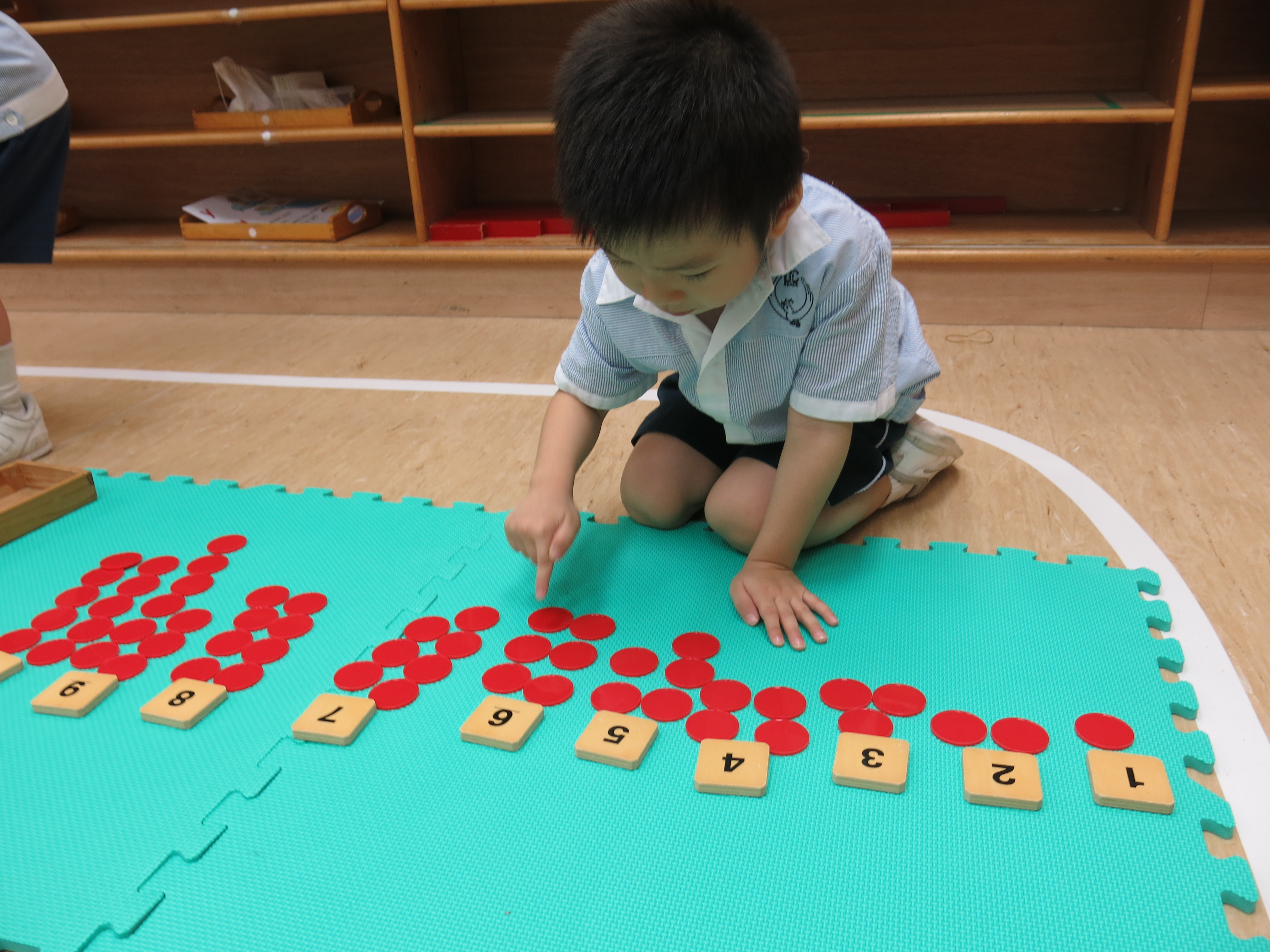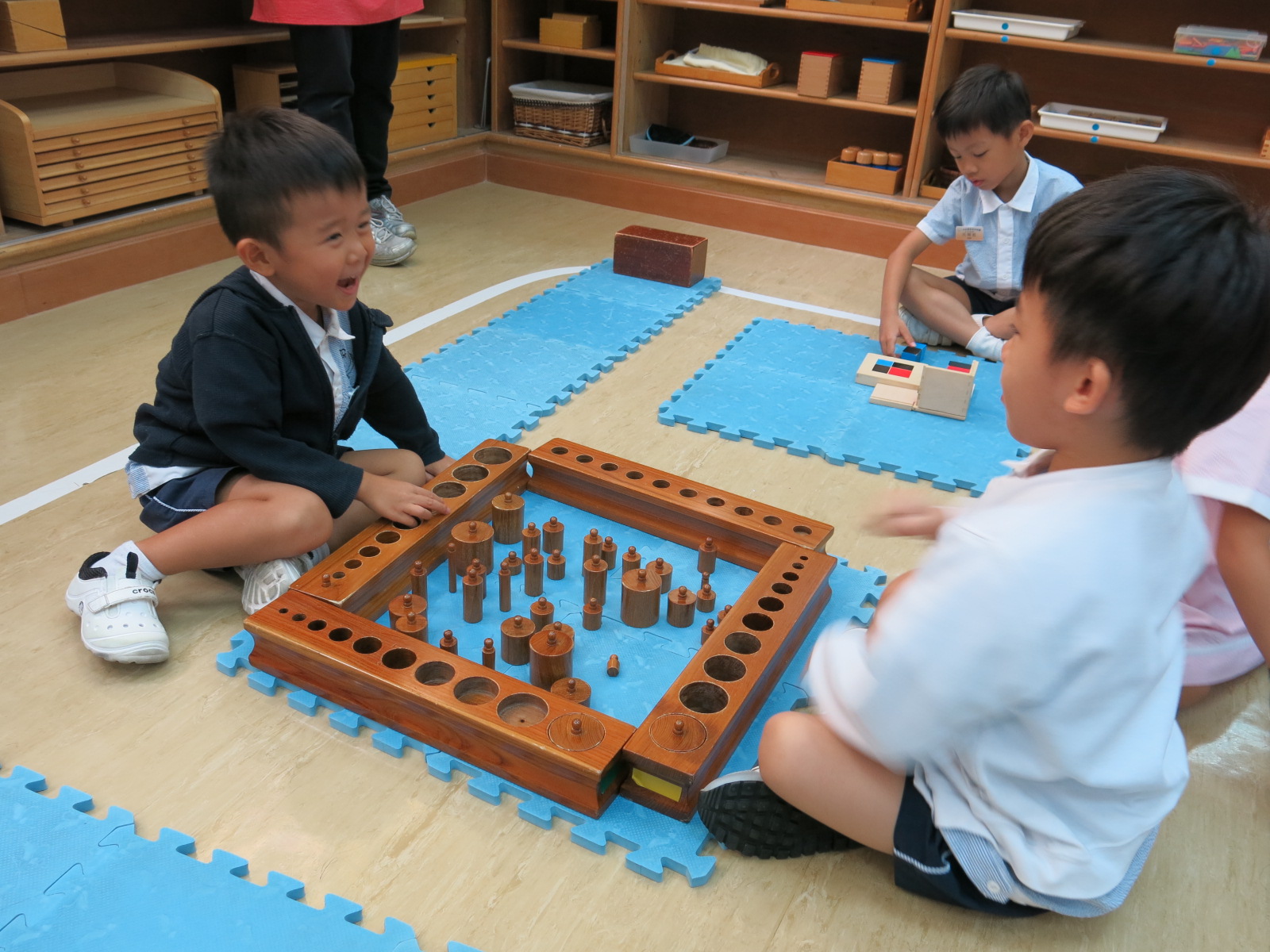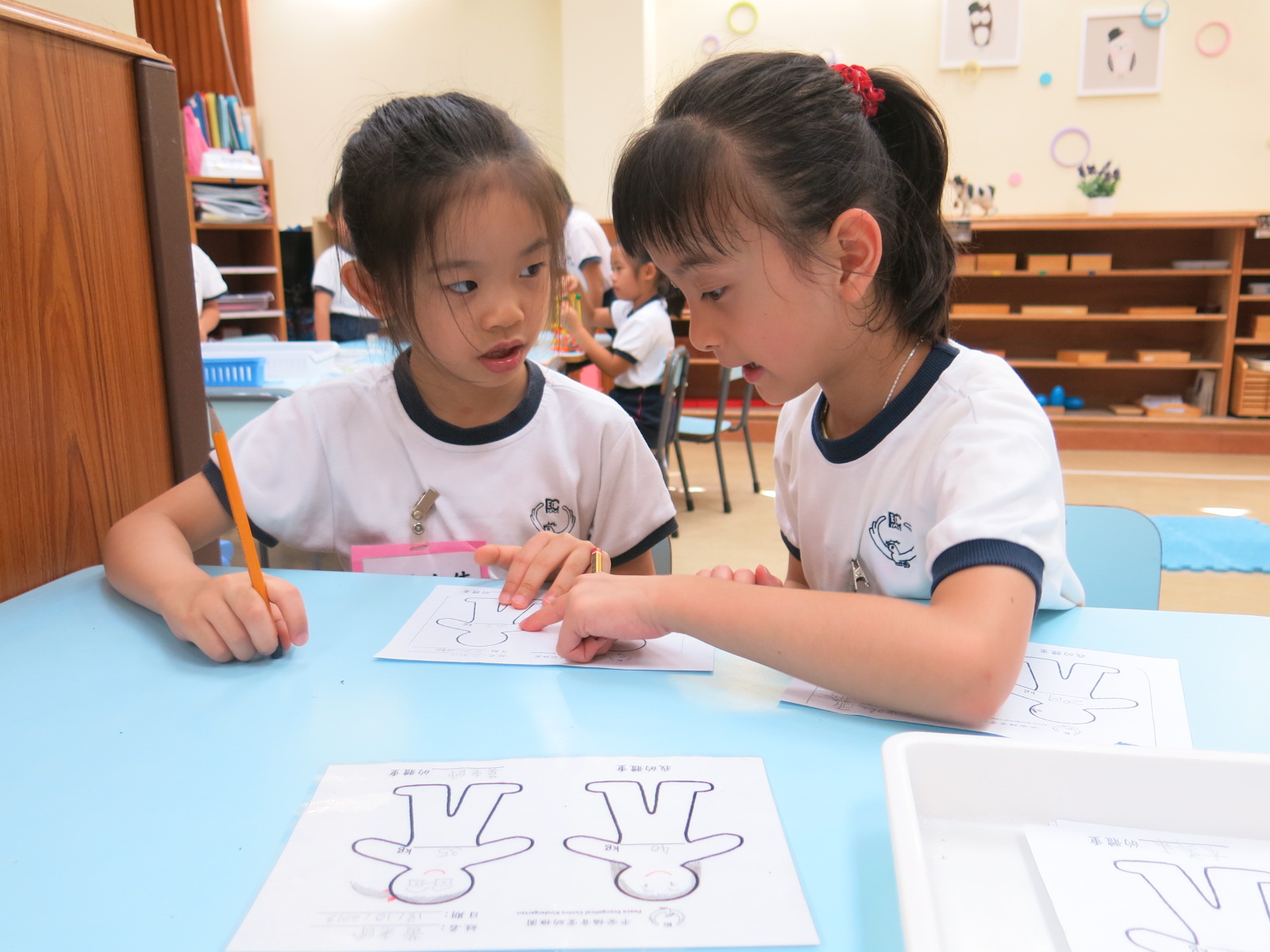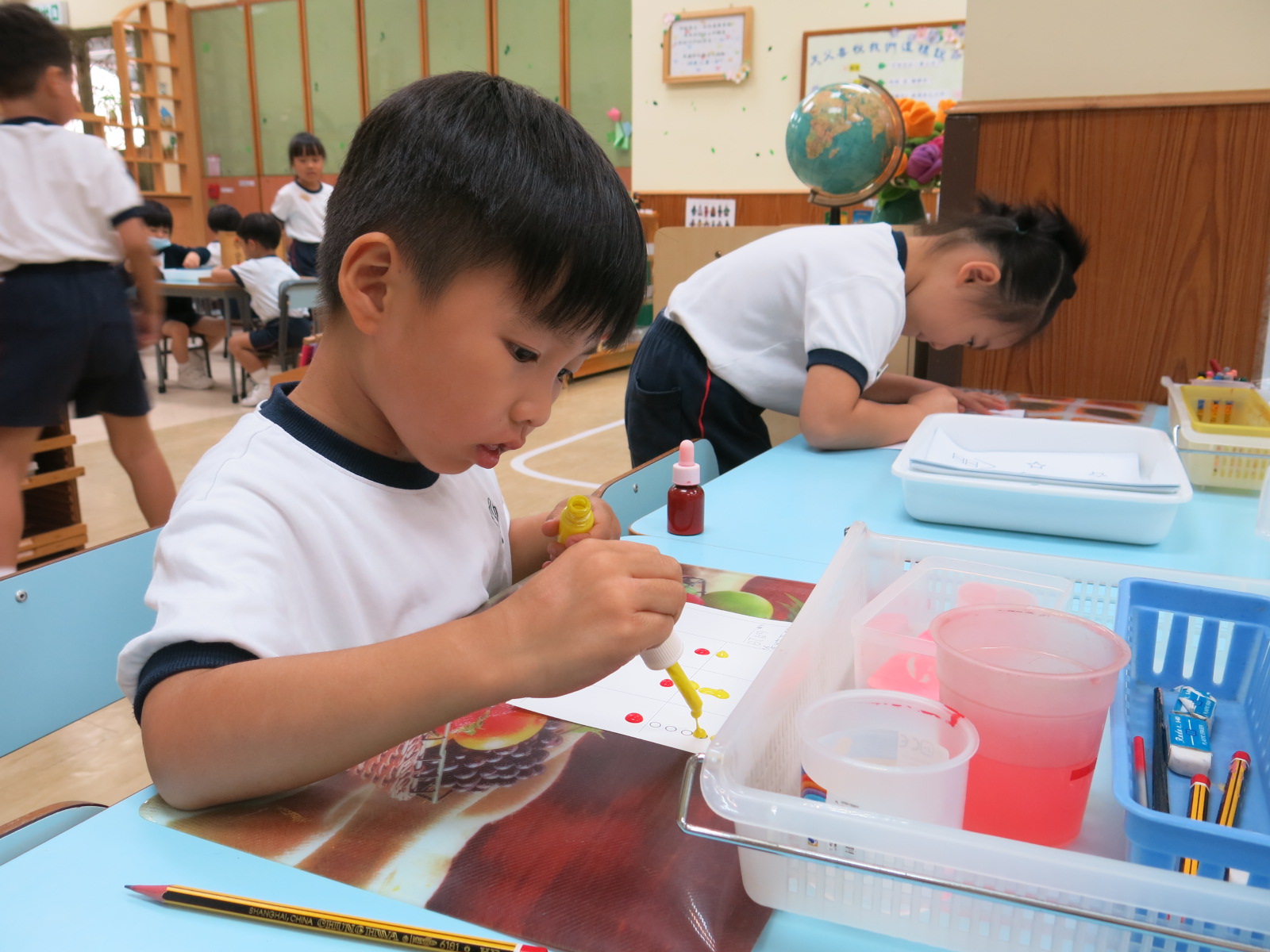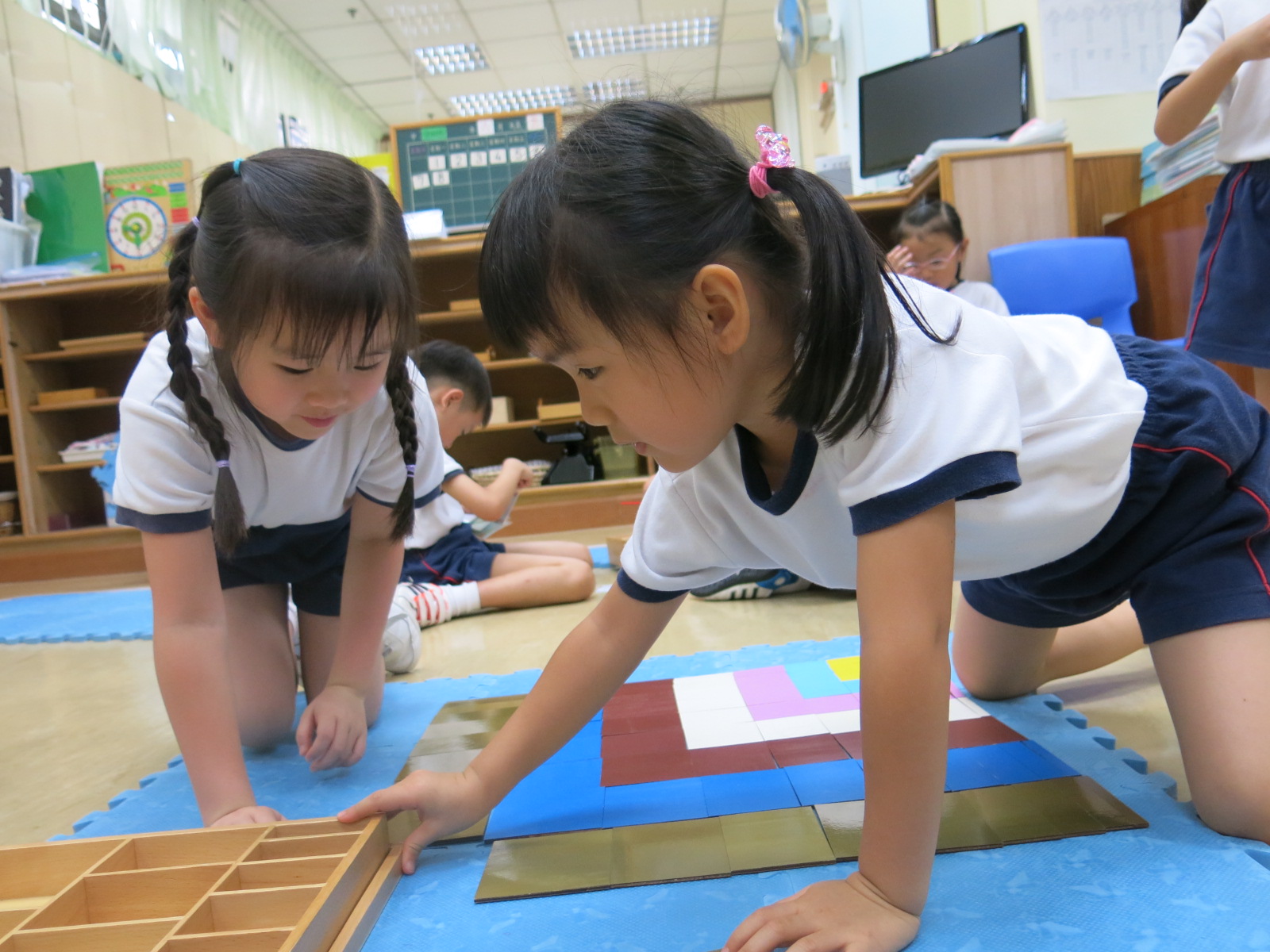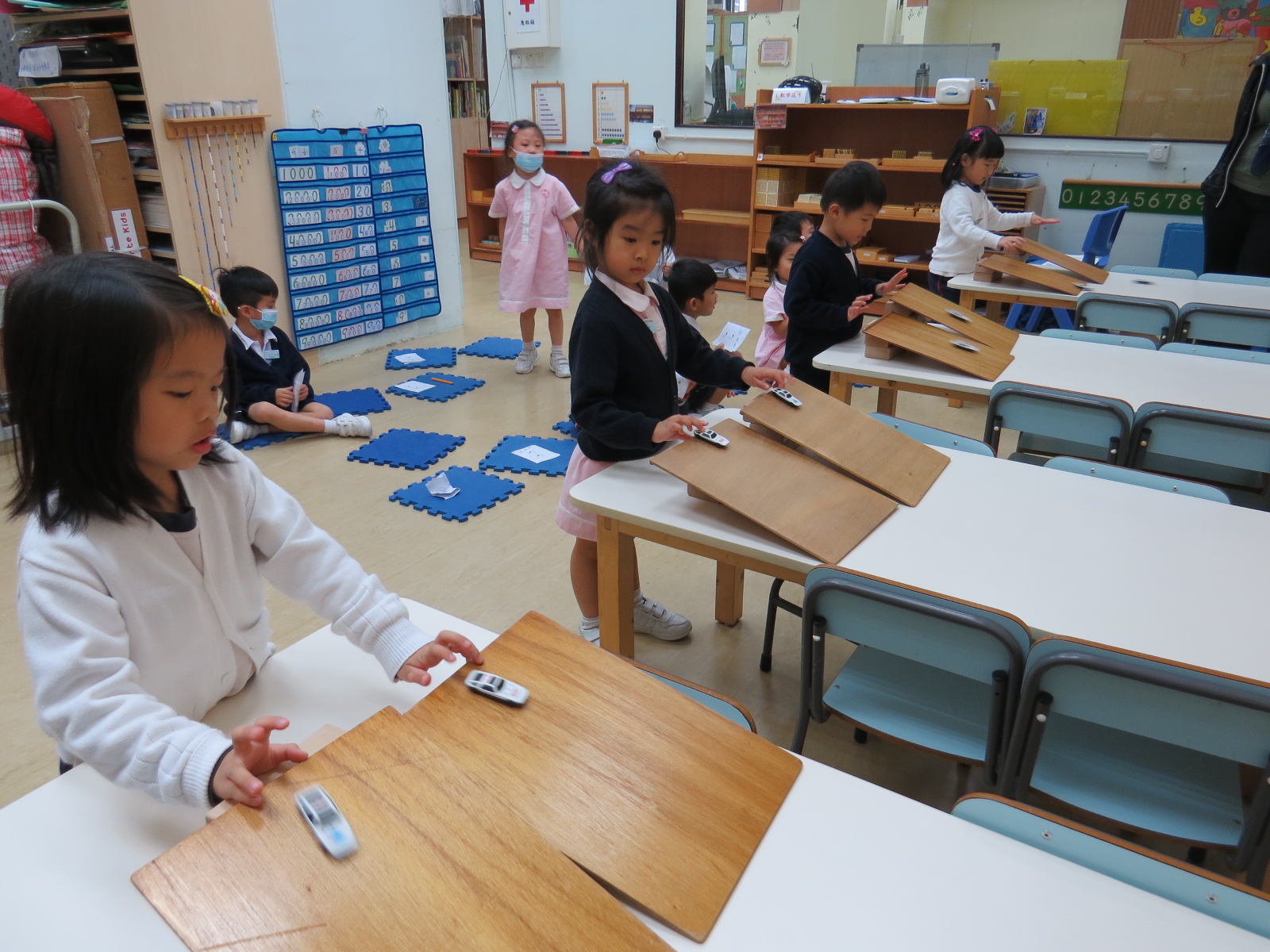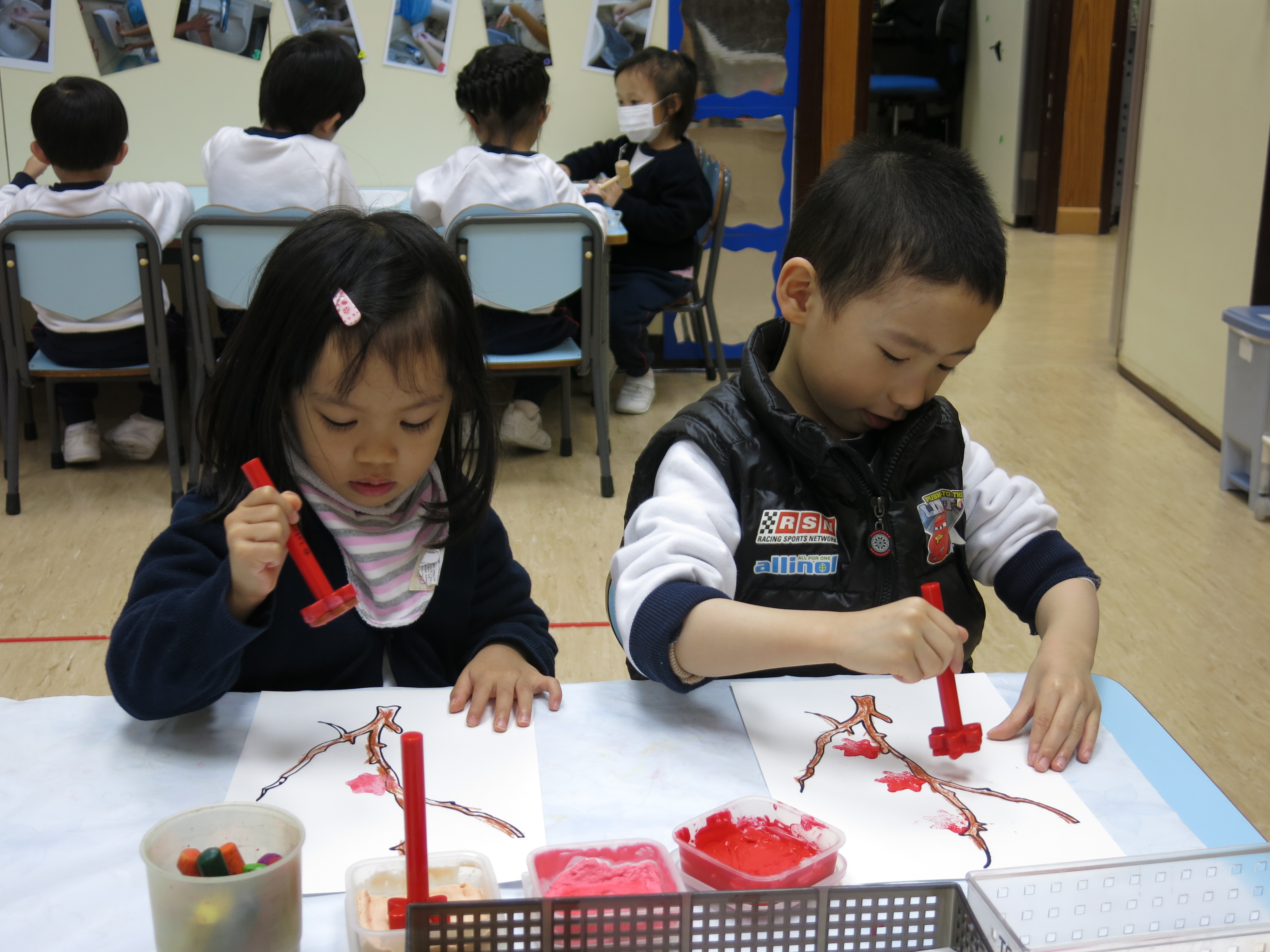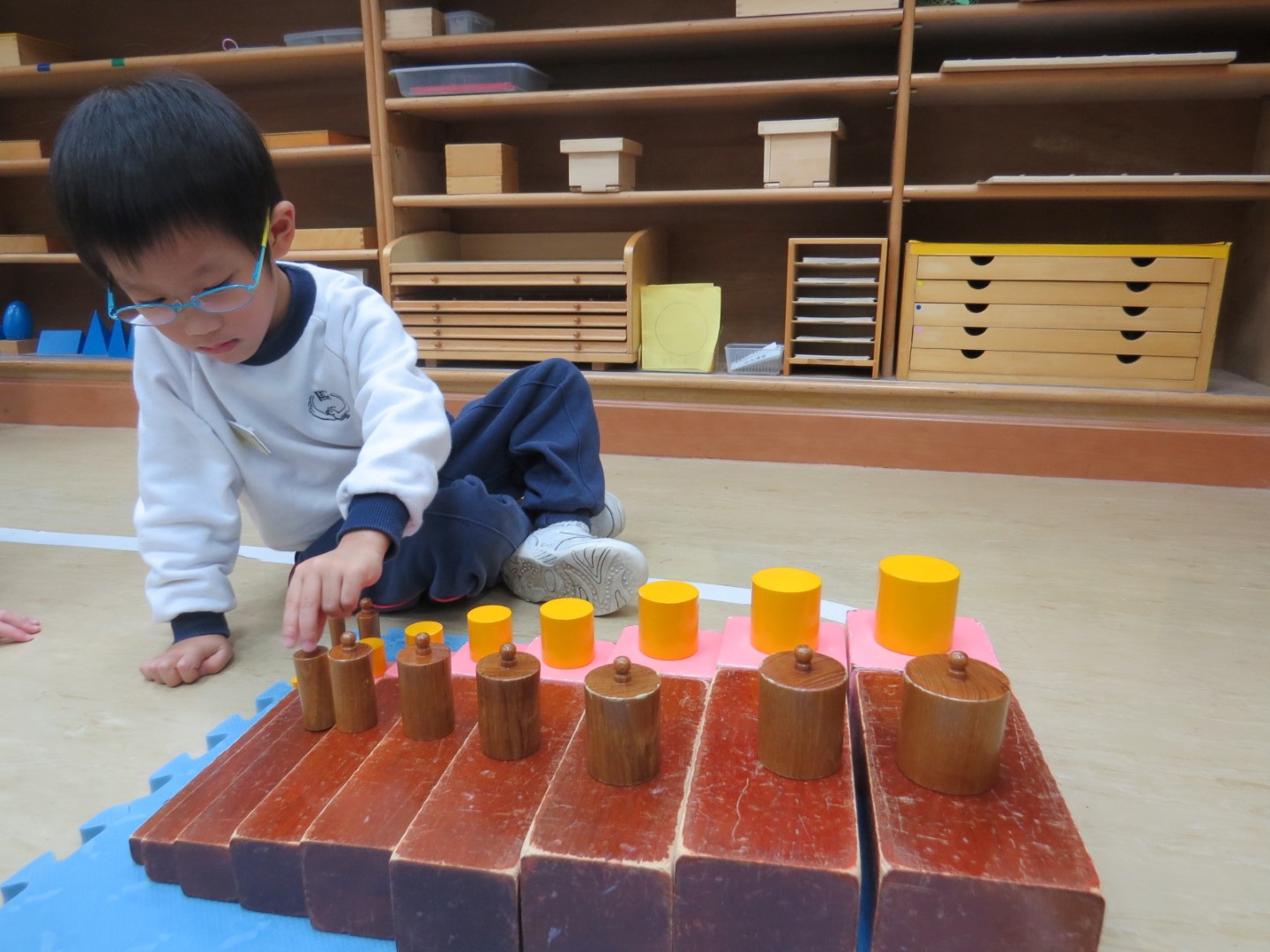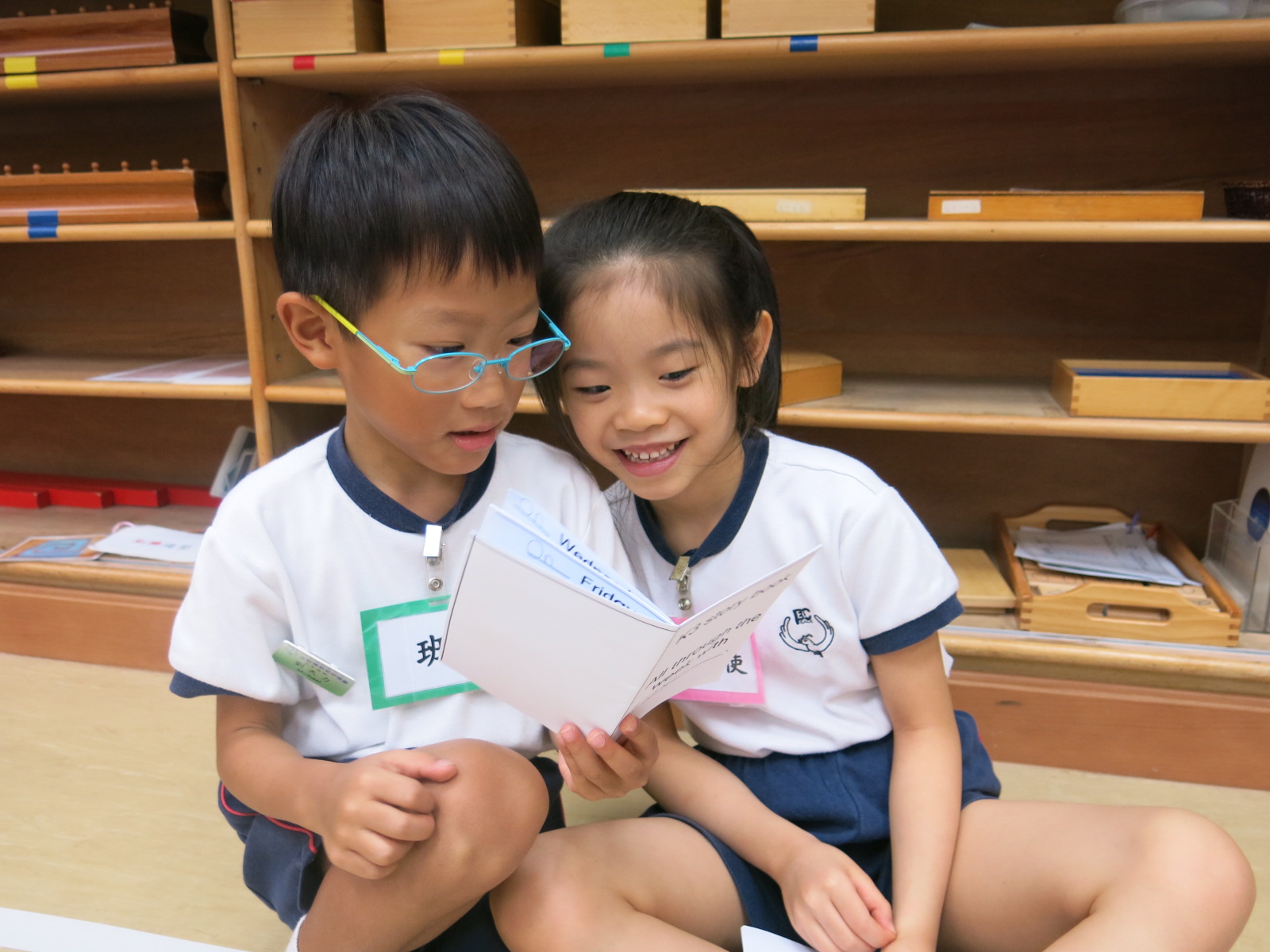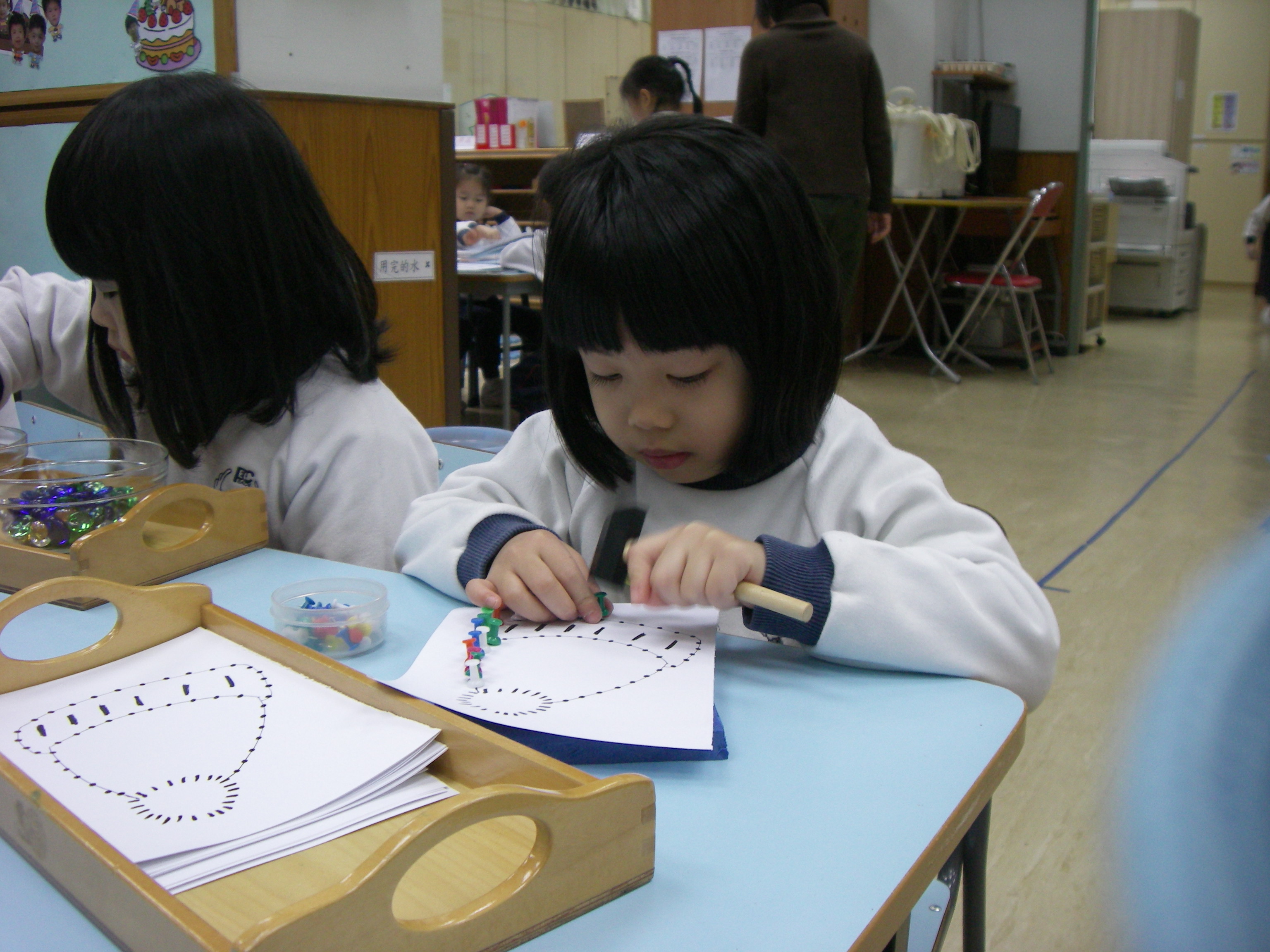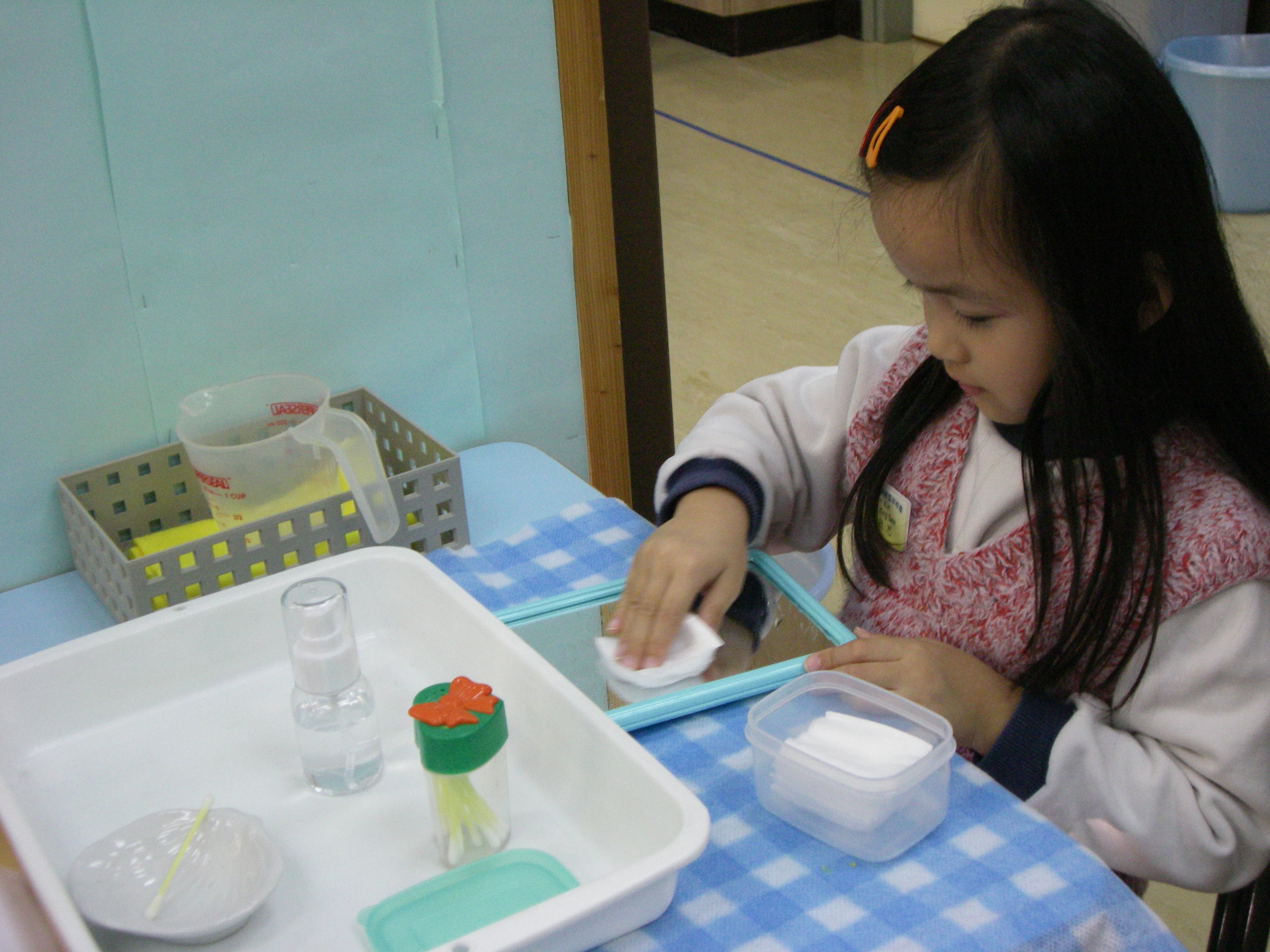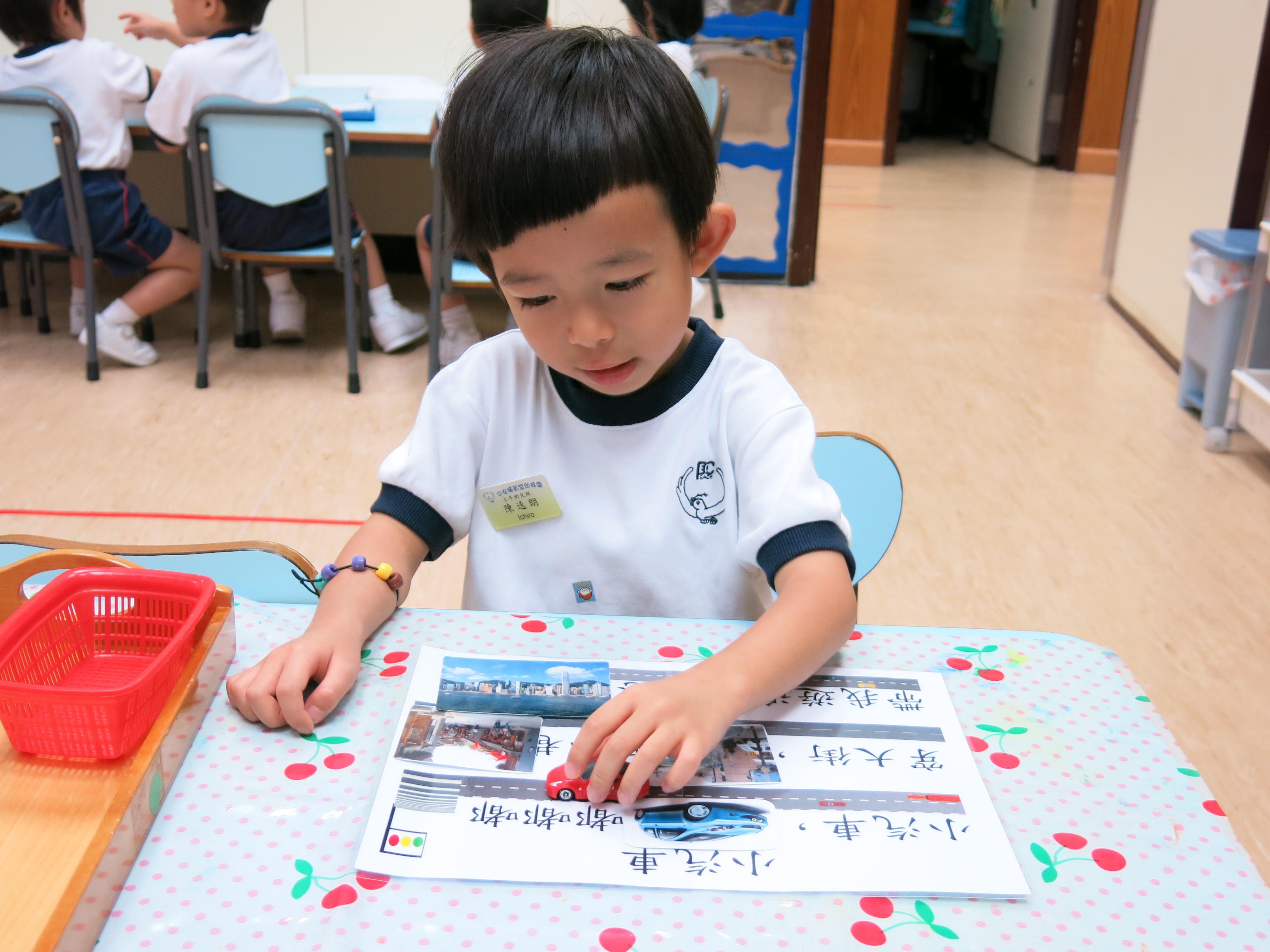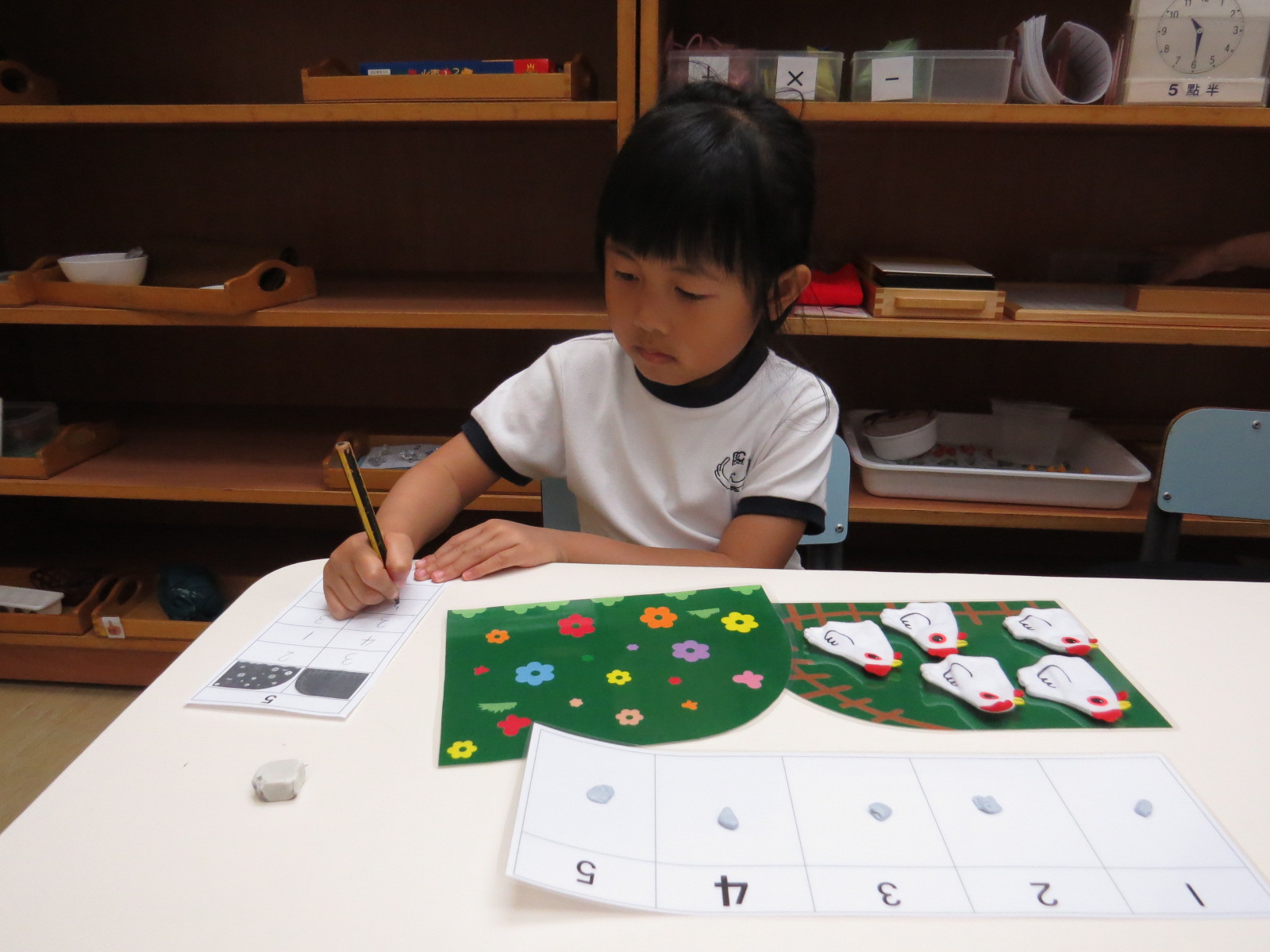To align with the Kindergarten Curriculum Guide of Education Bureau and the thematic Montessori education, an integrated Child-Centred and Bible-based Curriculum is provided to foster in children a balanced development in the domains of ethics, intellect, language, physique, emotional, social, aesthetics and spiritual, thus achieving the goal of whole-person education.
Montessori Method of Teaching
The Montessori Method of teaching is based on self-directed activity, hands-on learning and collaborative play. In Montessori classrooms, children of mixed-age from 3-6 years old make creative choices in their self-directed learning through different independent themes, while the classroom and the highly trained teacher offer age-appropriate activities to guide the process. Children work in groups and individually to discover and explore knowledge of the world and to develop their maximum potential.
Bible-based Curriculum
The Bible-based education is mainly to foster and to train children’s skills of solving interpersonal conflict and character-building such as self-respect, self-discipline, honesty and wisdom and the like in the context of the Bible. Through each thematic and joint-class singspiration and worship, children’s body and soul are invigorated. In addition, the routine story telling of the principal and the chaplain help develop children’s accomplishment of conduct and behaviour as well as the heart to our Heavenly Father.
Language Learning
Regarding the language learning, we have participated in the Refined English Enhancement Scheme and “Read and Write: Learning Support Network” launched by the Education Bureau to enhance and nurture children’s interest in Chinese and English language learning. We aim at
- letting children learn the English and the Chinese language joyfully.
- fostering children’s reading skills.
- letting children expose to different kinds of reading materials
- letting children learn about the daily conversation and the rhythm by reading aloud in a bilingual environment
- building up children’s confidence in using the Chinese and the English language
- Letting children expose to both simple alphabet and digraph phonics in accordance with their various developmental stages.



